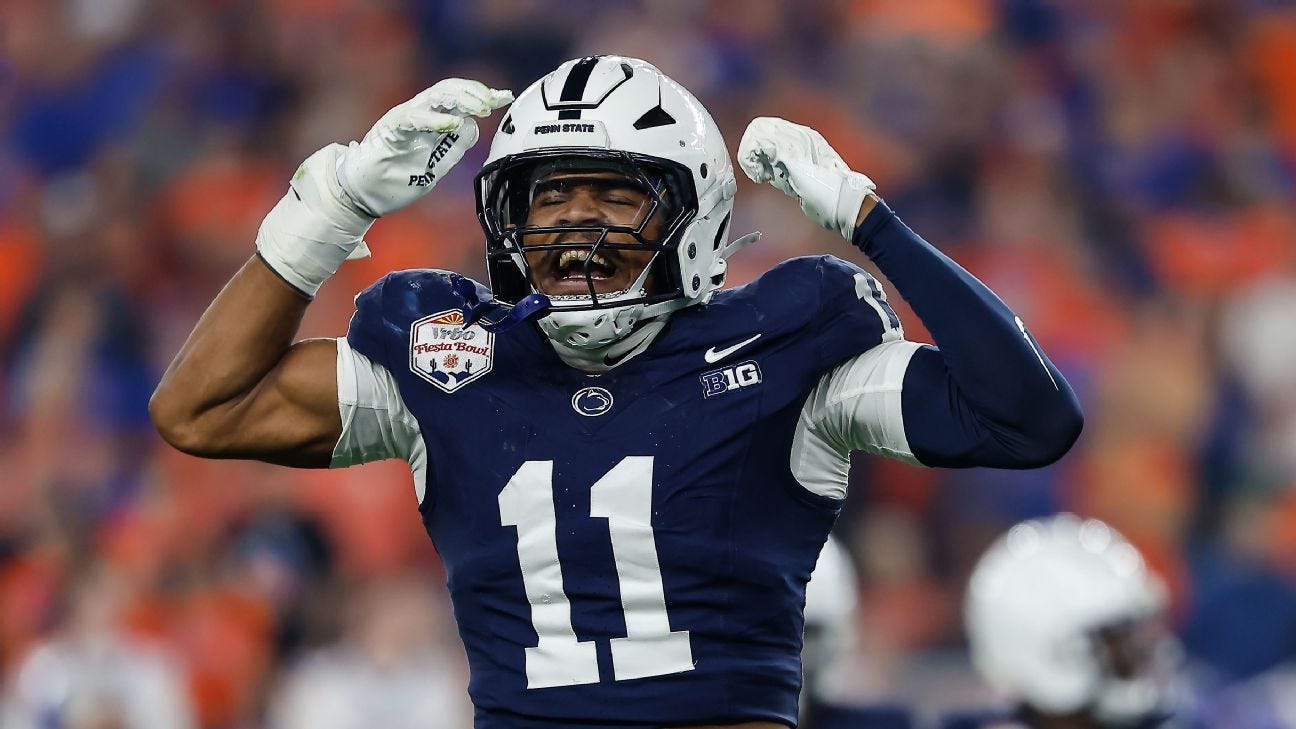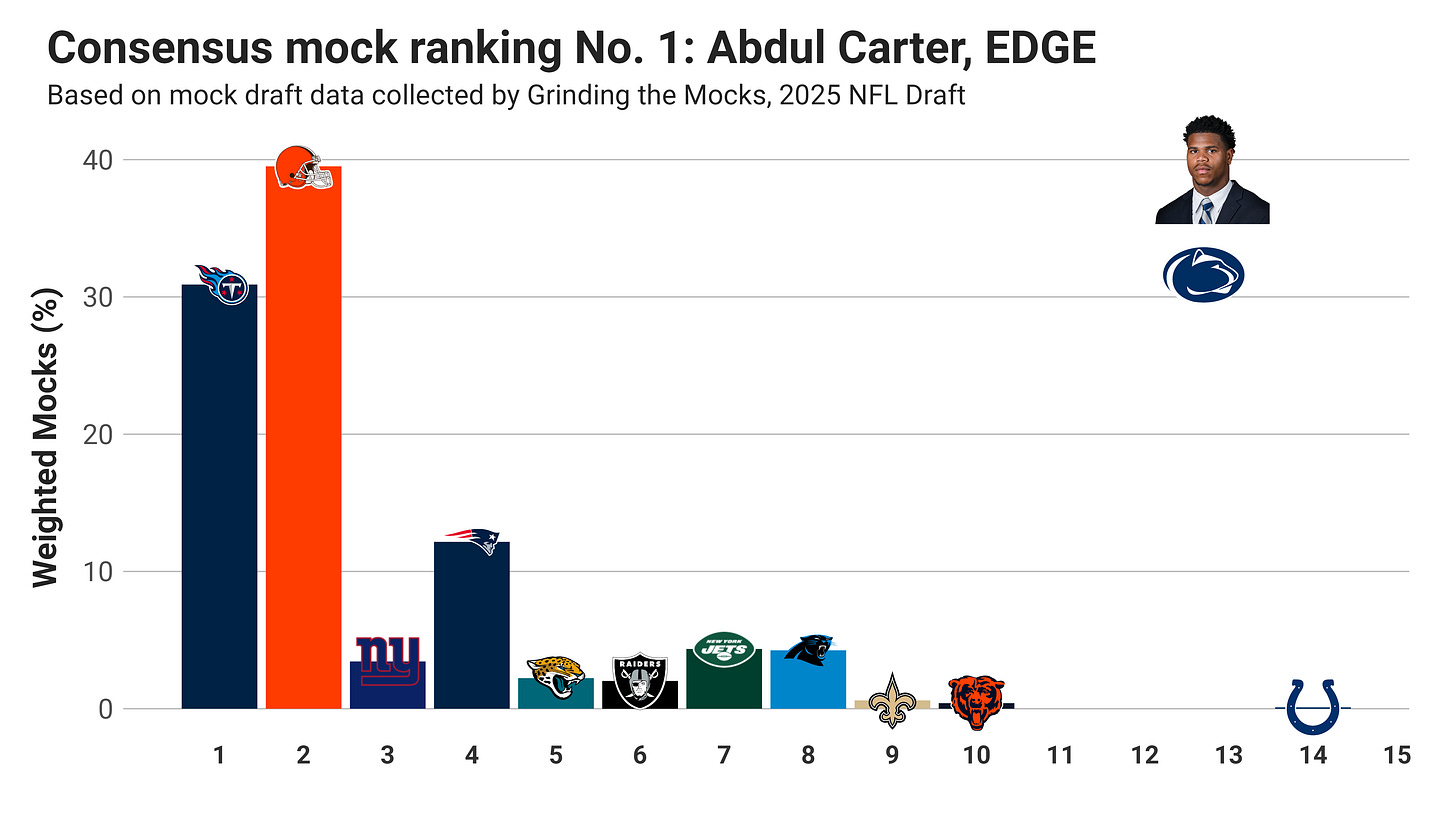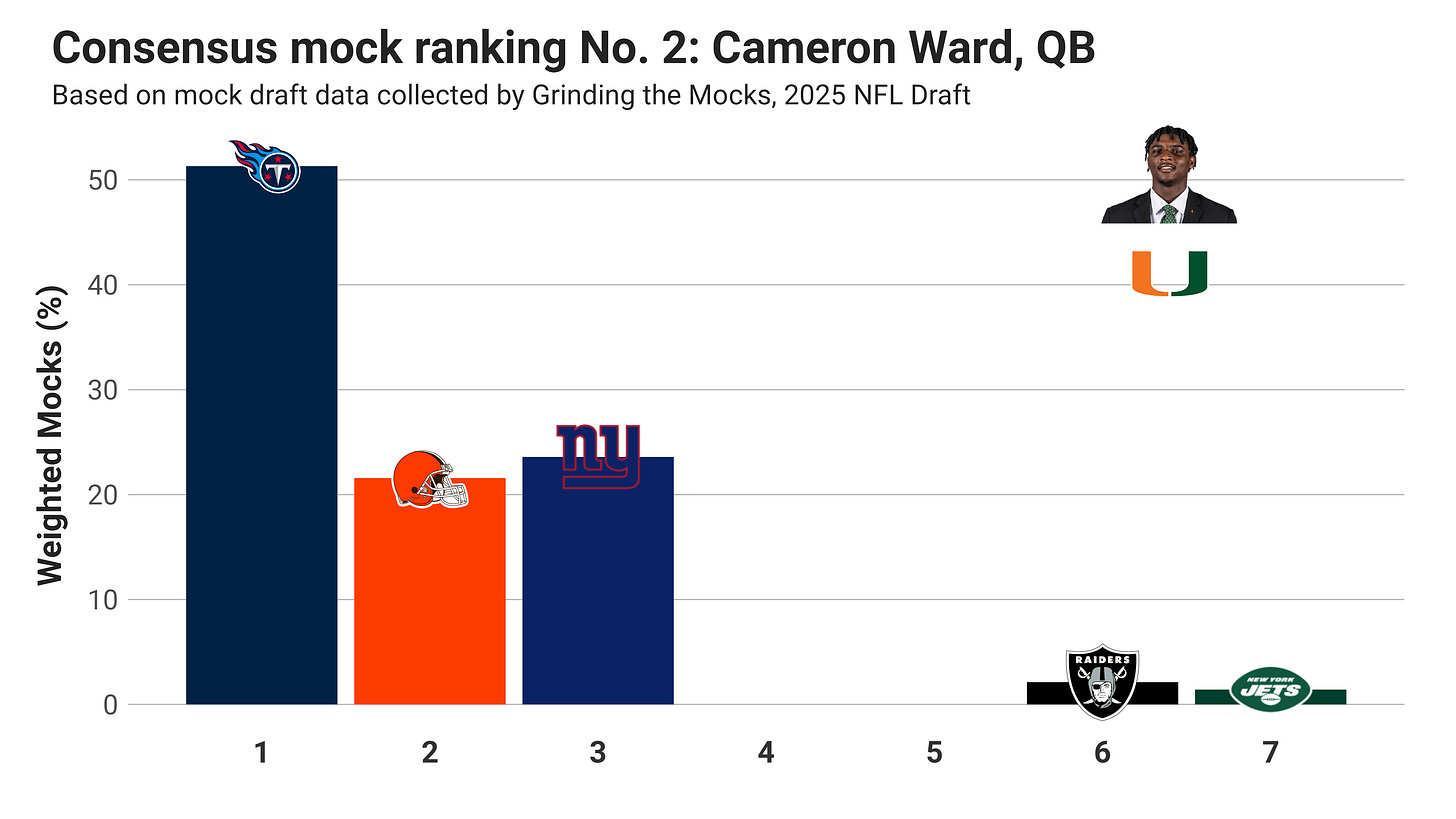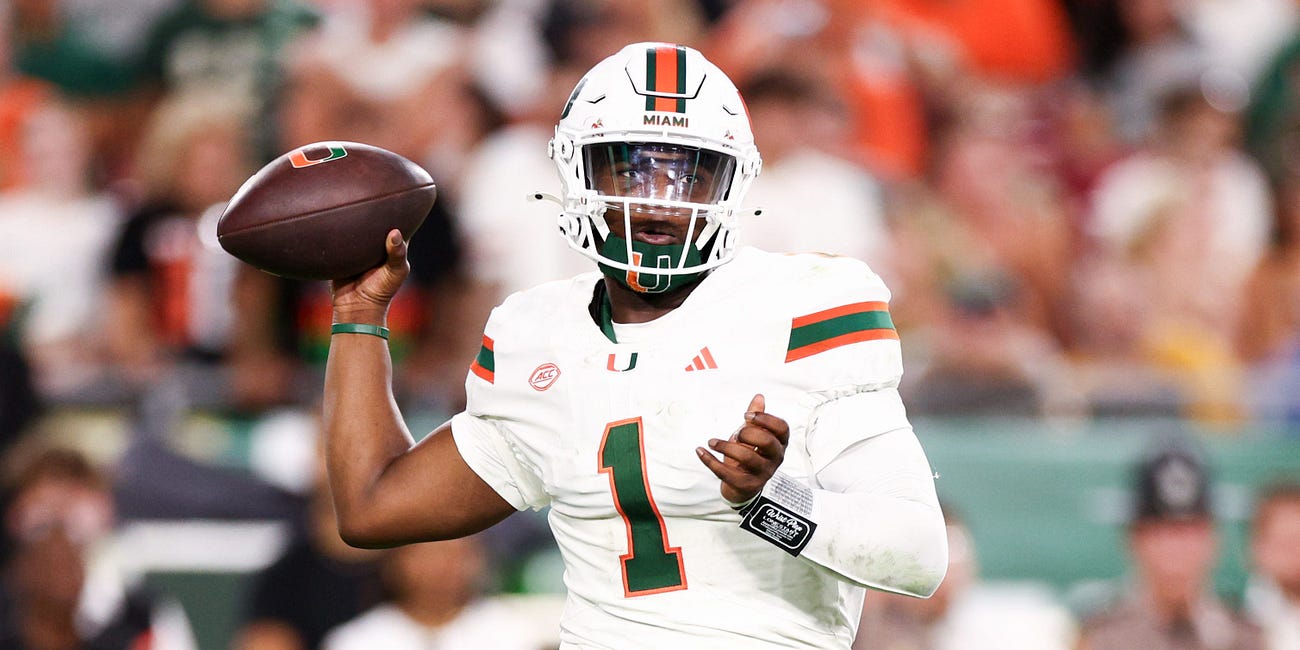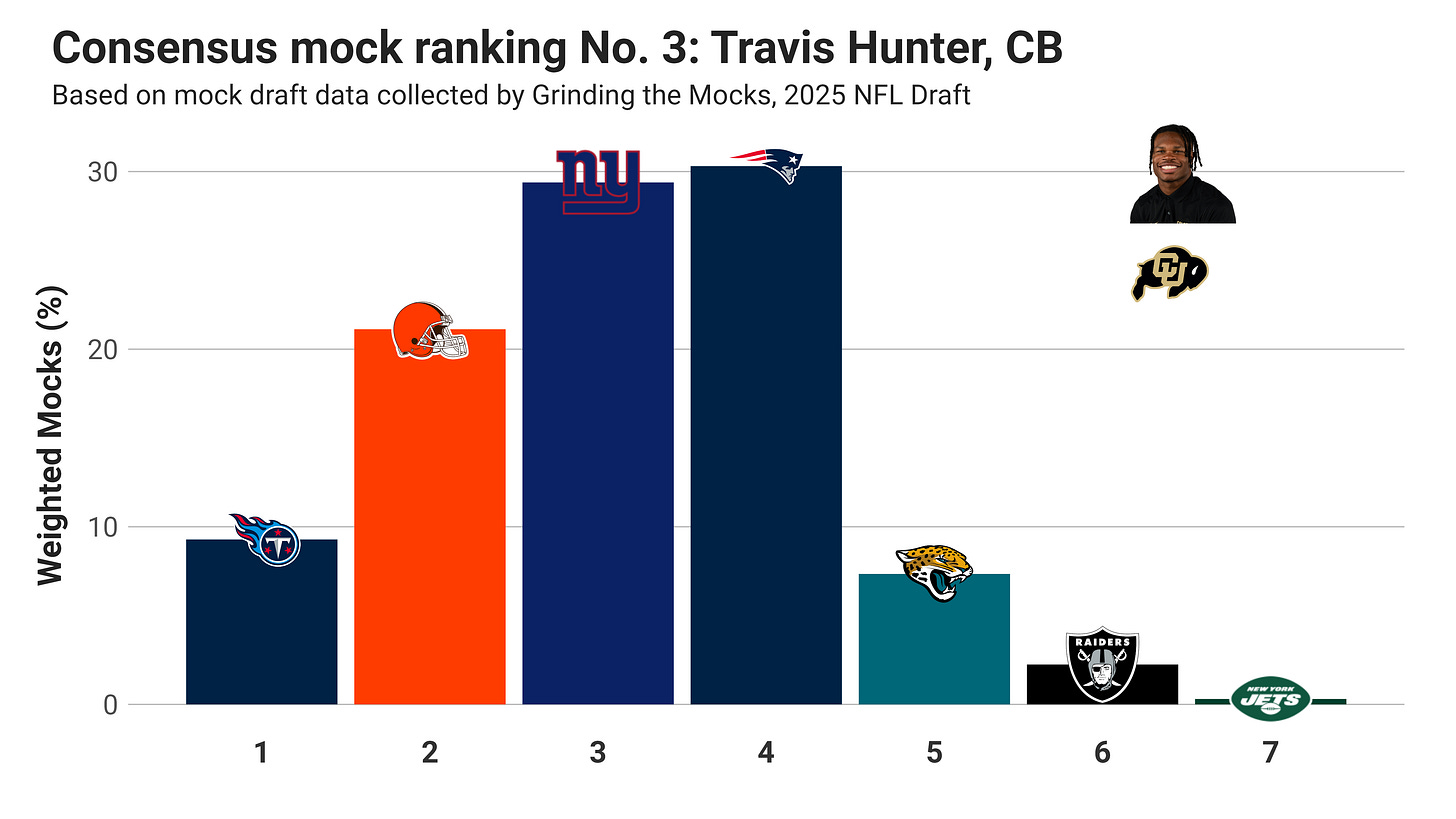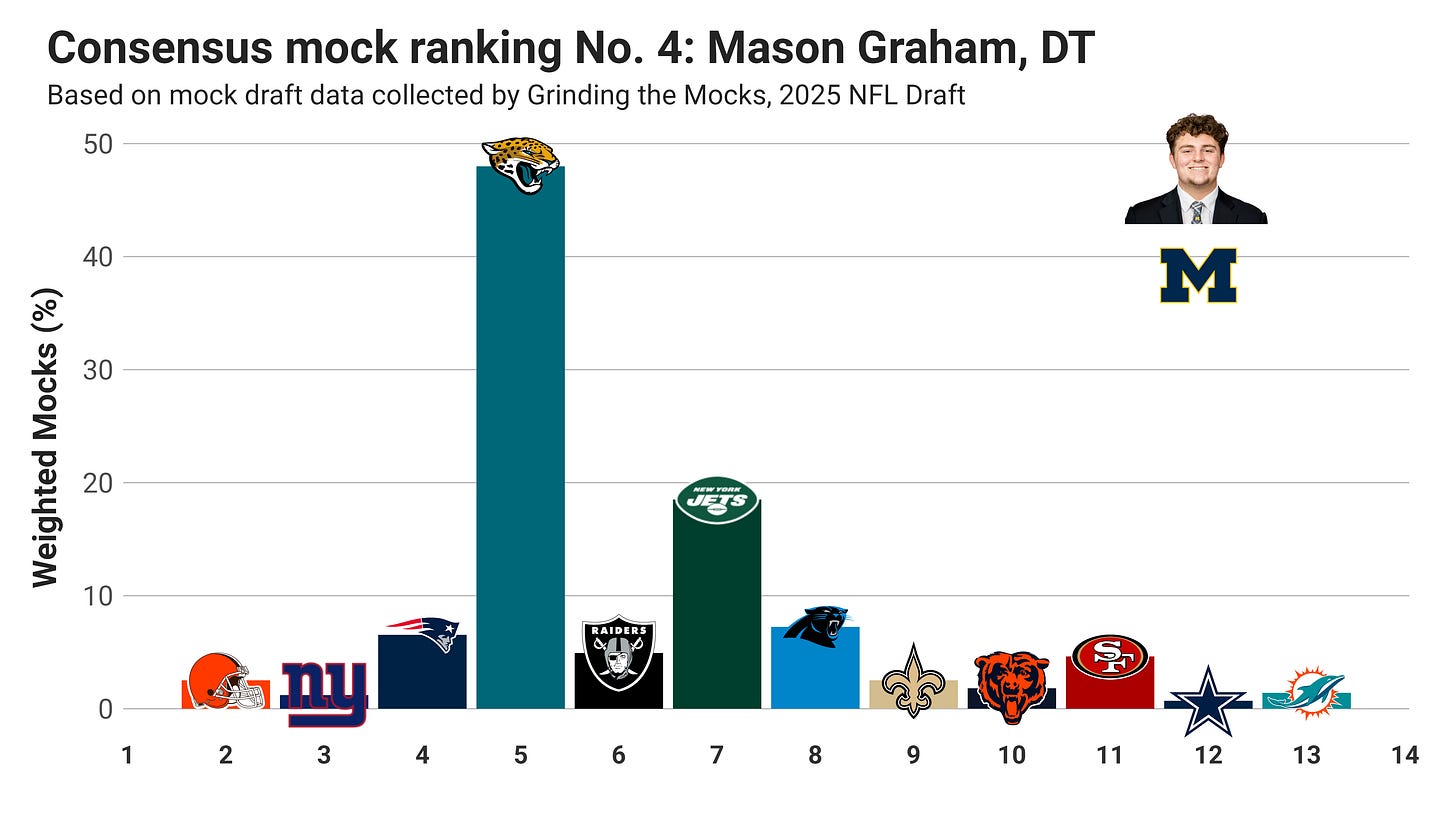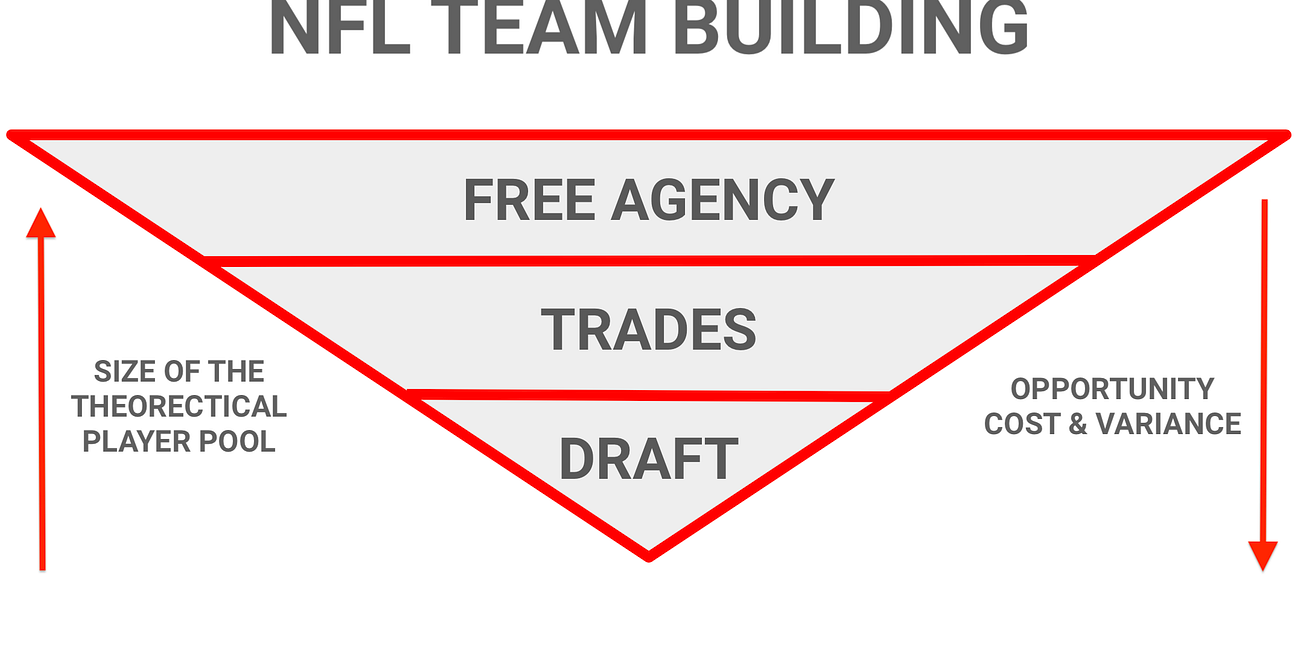Consensus 2025 NFL Mock Draft: Version 1.0
Quantifying all the shifts in mock draft assumptions following the NFL Combine, the first phase of free agency and some meaningful trades
At the risk of sounding immodest, I believe my data-driven process for this mock produced something more packed with information than any you’ll find anywhere out on the draft-prediction streets. It doesn’t have the details of “why” on every player selection or my personal opinions on the various prospects. But it does have the benefit of the wisdom of crowds, and a layer of uncertainty you’ll never find in a single mock draft.
A picture is worth a thousand words, and below you’ll find detailed visualizations for the top-32 players according to mock draft data collected by Benjamin Robinson at Grinding the Mocks. I’m including the first pick of the second round, as the Panthers don’t have a first-round pick and it will be their top selection. I’m lucky to have a partnership with Robinson this offseason with access to his data.
You will not find a more comprehensive data set for mock drafts, which is combined with Robinson’s work gauging the prior accuracy of major mock drafters. That work comes together in the “Weighted Mocks” score he has for each draft selection for every prospect. You’ll find that score on a percentage basis on the Y axis. Here’s an explanation of how weighted mocks is calculated from Robinson:
To calculate "Adjusted Mock Drafts", we use "Grinding the Mocks" pick-by-pick mock draft data at Player, Pick, and team level. As the draft order has only just been finalized, this data should become more firm as the draft process goes on. Player, team, and pick mock drafts are counted and then adjusted accordingly based on the draftnik's historic accuracy and how close the mock draft is from the date of the NFL draft.
Years of draft watching tells us that there is an additional layer of uncertainty missing in terms of a player going at a fully unexpected draft position, especially when any team can trade up or down in the draft. For this first consensus mock run, I’m just presenting the straight numbers based on the weighted mock draft data. As we get closer to the draft, I’ll attempt to add needed uncertainty to the range of possibilities based on historical patterns. Plus, we’ll get deeper and more robust mock drafts as the offseason progresses.
We’ve made our way through the NFL Combine, had a major trade the shake up the top of draft boards, and gotten most of the way through free agency. There will be more material news between now and the Day 1 of the draft in late April, but much of the foundation has been set.
Okay, let’s get to the info. The top-32 players are given with their positions, headshots and school logos. The NFL teams are represented by team logos and primary colors.
Unlike prior years, a non-quarterback tops the consensus mock, though Abdul Carter’s draft distribution is a bit wider than you’d think for the best prospect in the NFL draft. There have been some mocks projecting Carter to go not only outside the top-4, but a late as the back-end of the top-10.
The question for Carter and other non-quarterbacks is whether the hype around top quarterbacks being pushed up to the top couple of picks (maybe top three) of the NFL is real.
Cam Ward is the consensus No. 2 pick among mock drafts by this methodology. But he’s the QB1 in a draft with lots of quarterback needy teams - including the teams currently holding the top-3 picks in the draft. Ward is also the most commonly mocked prospect at the No. 1 pick.
I haven’t dug deeply into the quarterback class to have a strong opinion about Ward’s worthiness as the No. 1 overall pick. But I don’t believe the idea that the Tennessee Titans - or any other team - should pass on quarterbacks to first build up the rest of the roster. You should always take a quarterback when you have the opportunity to draft a potentially elite one.
The Titans look like a mess: They should still look to draft a quarterback
The idea for this analysis came from listening to the The SumerSports Show with Lindsay Rhodes interviewing Mina Kimes on the 2025 NFL draft. One topic of discussion was whether the Tennessee Titans should take a quarterback at No. 1 overall. Kimes initially said she wouldn’t take a quarterback if she was the decision-maker for the Titans, pointing her feeling that it isn’t “a good environment for a quarterback”. She immediately follows that up with the counter that she thought the same thing about the
The team distribution for Travis Hunter is just about as concentrated in the top-5 as that of Cam Ward. The most likely buyers appear to be the New York Giants or New England Patriots, with the latter having already drafted their “quarterback of the future” a year ago. I instinctually fade the idea that Hunter should be seen as an elite wide receiver prospects in addition to cornerback.
My heuristic is that players with truly elite ball skills never play defense in order to concentrate of catching passes, though Hunter appears to be a different animal in those terms versus other cornerback prospects.
With quarterbacks moving up mock draft boards and strong competition from Abdul Carter and Travis Hunter, the most likely destination for Mason Graham in appears to be the Jacksonville Jaguars. Defensive tackle is one of the “tier 1” positions according to my draft analysis, meaning those that should be targeted in the first round, assuming you don’t need to fill the quarterback position.
Inverting The Pyramid: The Optimal Offseason Guide to NFL Team-Building
With the Combine in the rearview mirror (make sure to check out my modeling on what actually matters among the various drills and measurements), the NFL media-take complex will now shift to free agency. There are a ton of great resources available for ranking individual names in free agency, and I even
Keep reading with a 7-day free trial
Subscribe to Unexpected Points to keep reading this post and get 7 days of free access to the full post archives.





